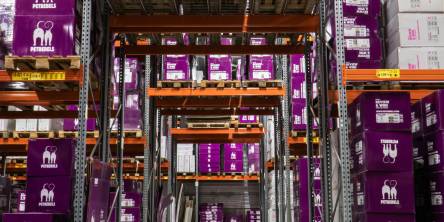Understand the Effective Benefits of Data Pipelines

Organizations today deal with massive amounts of data. To make informed decisions based on such data, it is necessary to analyze the data in a way that gives insights that can be acted upon. Data flow itself can be unreliable and there are many points during their transfer from one system to another where data can be prone to corruption. Data's increasing diversity and complexity leads to fragmentation and data silos, making it difficult to fetch simple business insights.
Processing big data effectively and efficiently requires data-driven strategies. The variety and velocity of this big data can be overwhelming, and a robust mechanism is needed to merge these data streams. This is where data pipelines come into the picture.
With this blog, I’ll highlight the essential benefits of data pipelines.
What Is A Data Pipeline?
Data can be sourced from databases, files, APIs, SQL, etc. However, such data is often unstructured and not ready for immediate use. A data pipeline is a technique or method of collecting raw, unstructured data from multiple sources and then transferring it to data stores or depositories such as data lakes or data warehouses. But before this data is transferred to a data depository, it usually has to undergo some form of data processing. Data pipelines consist of various interrelated steps that enable data movement from its origin to the destination for storage and analysis. An efficient data pipeline facilitates the management of volume, variety and velocity of data in these applications.
Benefits Of Data Pipelines
- Centralization of data: A data pipeline helps create centralized databases by collecting and storing data in a single location that provides access to all users from multiple locations. Data centralization enables cross-functional collaboration and supports data transparency across business. This helps users from different departments access the data using a single management system. Centralization of data also helps disable data duplication and data silos while enhancing data consistency.
- Data standardization: Unstructured data has to be transformed into a common and uniform format to generate insights by data analytics. This is possible using data standardization. It ensures that the data submitted for processing is durable, consistent and secure by providing a catalog of how it has been processed. The steps for data standardization are, setting data standards, identifying the data sets that need to be standardized, determining the data sources, identifying potential issues related to these sources and finally, formatting and verifying the standardized data.
- Flexibility and agility: Data pipelines can adapt quickly and efficiently to changing data needs and demands. Flexible and agile data pipelines can easily handle data inputs from various sources in multiple formats and volumes. They can scale the resources up or down according to the workload and demand. Flexible and agile data pipelines can provide faster and more accurate insights, enabling better decision-making and business outcomes. They can help reduce the cost and complexity of data management and improve the reliability and quality of data by avoiding data silos, latency and corruption issues. Flexible and agile data pipelines can support innovation and growth by allowing data teams to experiment with new data sources, methods and technologies.
- Improving data quality: Data pipelines can improve data quality as it moves from one location to another by applying consistent metrics and transforming the data to ensure that it is reliable and trustworthy. It helps reduce human error by automating data validation, cleansing, and enriching the data to ensure its meaningfulness and correctness. Using cloud-based solutions helps avoid data silos, latency and corruption issues common to traditional data pipelines.
- Iteration refers to repeating a series of steps or actions to realize a desired outcome or meet a desired condition. Iteration in data pipelines helps improve efficiency, quality and reliability of data processing and analysis. Iteration involves testing and validating data sources and formats to ensure that they meet the expectations or the desired outcome. The iterative approach increases efficiency by reducing the time and effort needed to collect, transform and analyze data. It improves the data quality by ensuring consistency, accuracy, and relevance.
Conclusion
A data pipeline is a set of processes designed to define what data to collect, from where and how, and to extract, transform, combine, validate and load this data for analysis and visualization. Data pipelines can benefit organizations that must manage and analyze large, complex data sets. They offer potent solutions for data management to help businesses achieve effective decision-making and business outcomes.
There are many unique ways to go about it, and tying up with a full-service data analytics company for data pipeline automation to save valuable time, effort and money to develop a low-code platform that can handle simple replication tasks and complex data transformations.
Similar Articles
Unless you have been hiding in a cave somewhere, you would know and realize that the world is creating information at a stunning speed. While it is genuinely considered normal information that said data can now be turned into the groundwork of achievement for essentially any business in the present day and age.
Software development refers to the procedure of constituting and nourishing software applications. This provokes the utilization of many fundamentals and practices. Software development targets constitute structured, dependable, and beneficial software.
Designing a data warehouse is a strategic activity that builds the groundwork for strong data management and analytics capabilities within a business. In today's data-driven world, the systematic creation of a data warehouse is not only a technical requirement but also a critical step in harnessing the power of information for informed decision-making.
The integration of Internet of Things (IoT) technology into the construction and real estate sectors, which include buildings, infrastructure, homes, and businesses, is predicted to increase dramatically in the future. Despite this predicted expansion, the construction industry is behind other industries in terms of IoT adoption.
In this dynamic world of innovative and transformative technology, the use of Minimum Viable Product (MVP) has proven to be a winning strategy for success.
While monolithic applications may have waned in popularity during the era dominated by the cloud and microservices, interest is resurgent. Organizations, in considering their position on the application modularity spectrum, are now examining both the advantages and drawbacks of relying on microservices.
Data visualization is an indispensable tool that allows us to transform raw, and often unstructured data into insightful visuals, identify patterns, and communicate these insights to the wider audience and stakeholders.
For modern businesses to thrive, ensuring the effective management of inventory stands has become vitally important. Inventory management stands as a cornerstone of success. And the emergence of the Internet of Things (IoT) has introduced a new era of connectivity and efficiency across diverse industries.
Do you know what the following e-commerce companies have in common: Amazon, Walmart, eBay, and more? All of these e-commerce companies' apps make use of Java. Java is decidedly among the leading choices of programming language for e-commerce applications because it offers a world of benefits; for example, since Java code can be run on any platform with a Java Virtual Machine (JVM), users of e-commerce apps made with Java can access the said apps on a variety of devices.








